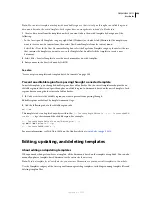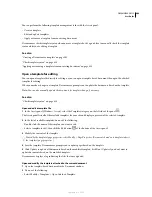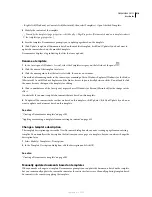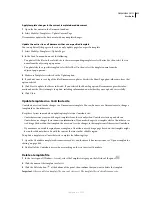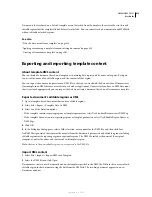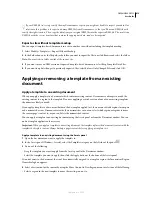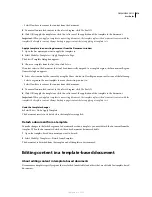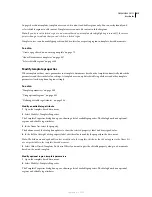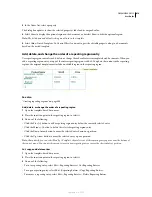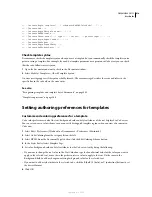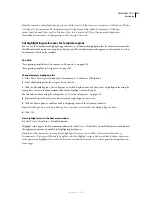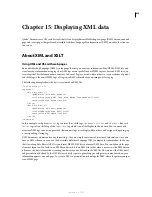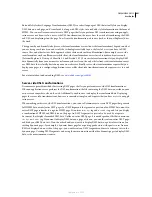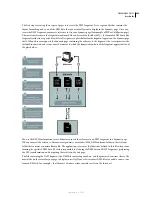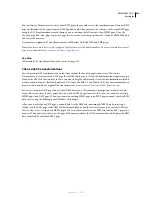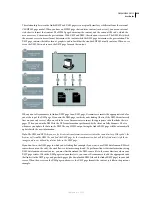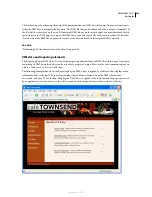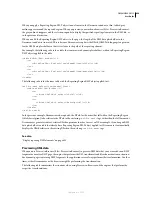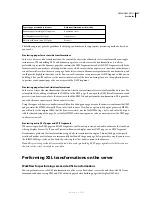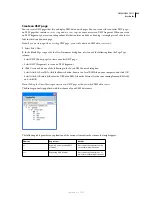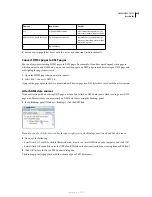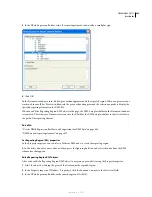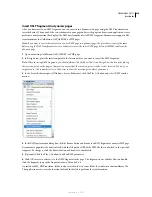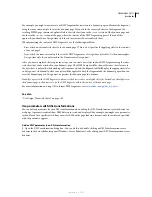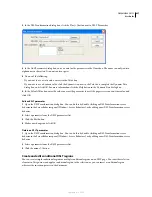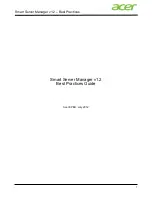
DREAMWEAVER CS3
User Guide
422
The first step in creating these types of pages is to create the XSLT fragment. It is a separate file that contains the
layout, formatting, and so on of the XML data that you eventually want to display in the dynamic page. Once you
create the XSLT fragment, you insert a reference to it in your dynamic page (for example, a PHP or ColdFusion page).
The inserted reference to the fragment works much like an Server Side Include (SSI) — the formatted XML data (the
fragment) resides in a separate file, while in Design view, a placeholder for the fragment appears on the dynamic page
itself. When a browser requests the dynamic page containing the reference to the fragment, the server processes the
included instruction and creates a new document in which the formatted contents of the fragment appear instead of
the placeholder.
You use the XSL Transformation server behavior to insert the reference to an XSLT fragment in a dynamic page.
When you insert the reference, Dreamweaver generates an includes/MM_XSLTransform/ folder in the site’s root
folder that contains a runtime library file. The application server uses the functions defined in this file when trans-
forming the specified XML data. The file is responsible for fetching the XML data and XSLT fragments, performing
the XSL transformation, and outputting the results on the web page.
The file containing the XSLT fragment, the XML file containing your data, and the generated run-time library file
must all be on the server for your page to display correctly. (If you select a remote XML file as your data source—one
from an RSS feed, for example—that file must of course reside somewhere else on the Internet.)
September 4, 2007

